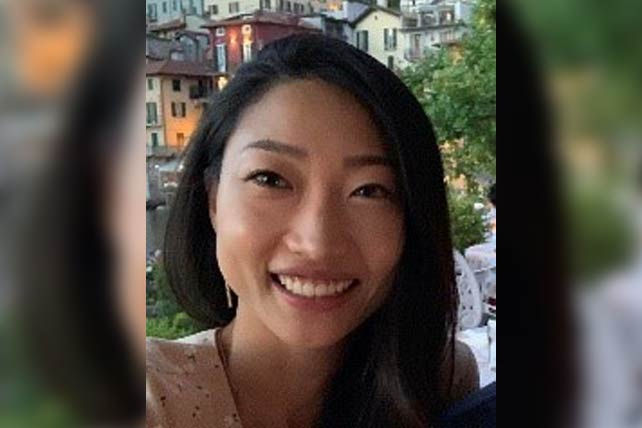The coronavirus pandemic has taken a toll on millions of Californians. This is especially true among low-income families, including my patients at Harbor-UCLA Medical Center.
SK is a 25-year-old Latina mother of two who brought her children to the pediatric emergency room in early April. (To protect patient confidentiality, I am referring to my patients by their initials.)
When I entered the exam room, SK’s anxiety was palpable. She was terrified that her 2-year-old and 4-year-old children had COVID-19. I’ll never forget the frightened look on her face as she told me that her sister, with whom they lived, had tested positive for COVID-19. The mother came to the ER because her little ones had the same symptoms of cough,congestion and runny nose as their aunt. SK was afraid the kids were going to die.
A total of seven people lived in the house, including SK’s mother who is in her 70’s. With so many people in a small place, physical separation from her sister was almost impossible. In addition, the grandmother usually helped with caring for the children, who were too little to understand social distancing.
Fortunately, the children had a different viral illness, not COVID-19. Still, SK was at a loss of how to protect herself, her children and her family.
A few days later in the pediatrics clinic, I had a telehealth visit with another patient, DK, a 19-year-old college studentwith ADHD, asthma and mental health problems, including depression and anxiety. He works at a large local grocery chain to help support his family. In early April, he developed a fever, cough and shortness of breath and was afraid he had COVID-19. But he didn’t have access to testing.
DK had experienced symptoms for nearly three weeks by the time we talked. I referred him to an ER near his home and gave him a list of COVID-19 testing sites.
DK said he was afraid of transmitting the coronavirus to his 59-year-old mother and 89-year-old grandmother, because they live in a 1,000-square-foot apartment with close sleeping quarters. He also said his anxiety had worsened — he was worried about his health and about being contagious. Fortunately, he was able to stay connected to his mental health providers with videoconferencing.
After nearly four weeks of symptoms, DK finally accessed COVID-19 testing, which was negative. But to him, the month of worrying felt like an eternity.
We see patients like these every day at Harbor-UCLA Medical Center, a Los Angeles County safety-net hospital. Most of the pediatric patients are from low-income families with government-sponsored insurance, including Medi-Cal (California’s version of Medicaid).
Most of our families barely get by in the best of times. How will they fare during a viral-induced economic downturn? The pandemic is exposing how fragile their lives are.
A lack of resources is their reality. SK and DK’s families demonstrate that even physical space — which is needed in order to self-isolate at home — can be a luxury.
Many of my patients or their parents are essential workers in low-wage jobs, including in food supply industries, such as DK. With schools and daycare facilities closed, some parents don’t have, or can’t afford, alternative child care. Adding to the difficulty is the fact that they often cannot rely on grandparents, because public health officials are advising older adults to practice social distancing.
Low-income families are more likely to live in households with more occupants and multi-generations to share expenses, according to a Pew Research report. Hispanic and Asian families are also more like to live in multi-generational families for cultural reasons.
The pandemic has displayed fully the glaring disparities in access to health care and the rates of underlying health conditions among people of color and low-income populations. In the United States due to a multitude of reasons, including societal inequalities, minority groups typically have higher rates of chronic diseases such as diabetes, high blood pressure and kidney disease, which are risk factors for more severe COVID-19.
Nationwide, people of color, notably African Americans, have remarkably higher infection rates and mortality with COVID-19 than whites, according to a report from ProPublica. Researchers looked at Milwaukee and found that black people accounted for 81 percent of COVID-related deaths, but made up only 26 percent of the population. Similar findings have been reported across the U.S., including in California.
The California Department of Public Health reported that Latinos, African Americans and Native Hawaiians and Pacific Islanders in the state are dying from COVID-19 at disproportionately higher rates.
Early in the pandemic, people of color and low-income communities had less access to testing. And when they sought care for symptoms, doctors were less likely to refer them for COVID-19 testing.
DK is a prime example — he didn’t have access to testing near his home. One of the early articles about the pandemic in the Los Angeles Times identified the trend of more COVID-19 cases in whiter and wealthier areas, which was related to the availability of testing and not the presence of the coronavirus. Residents in poor neighborhoods didn’t have access or perhaps, weren’t going for testing.
But, Los Angeles city and county, as well as the state, appear to be working on solutions. One example: Los Angeles Mayor Eric Garcetti launched the L.A. Emergency Child Care Connection, which provides childcare resources for essential health care workers of participating hospitals during the COVID-19 crisis. Health care workers who are unable to afford child care are offered stipends and child care referrals.
Los Angeles County also now has testing available for all residents. In addition, Gov. Gavin Newsom signed an executive order to allow two weeks of paid sick leave to food workers affectedby COVID-19, whether they were infected, exposed or ordered to quarantine.
And, fortunately we have safety-net hospitals, such as Harbor-UCLA, to care for the disenfranchised. I try to connect my patients and their families with resources that can help them during this crisis, including our hospital social workers and local food banks.
Everyone needs help to get through this crisis.
Dr. Grace Pyo is a pediatric intern at Harbor-UCLA Medical Center. A Torrance native, she now serves the community where she grew up.






